How to Grow Brussels Sprouts: A Gardener’s Guide to Big, Tasty Harvests
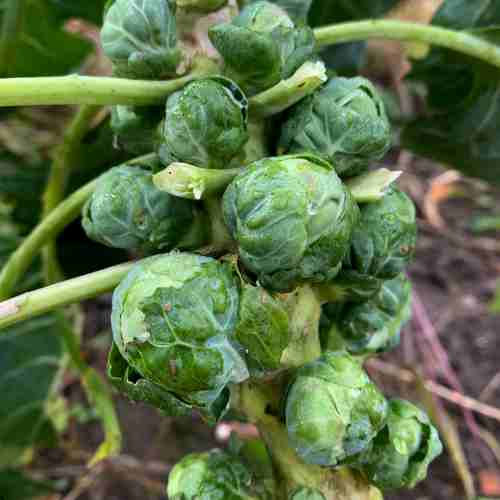
Brussels sprouts may have a bad reputation with picky eaters, but when grown and cooked correctly, they’re sweet, nutty, and absolutely delicious.
These tiny cabbage-like veggies thrive in cool weather and get even better after a light frost. If you want to grow your own fresh, flavorful Brussels sprouts, this guide will take you through every step—from planting to harvesting.
Get our Gardening Buddy and find veggies that fit your conditions best.
You Can Grow It!
Why Grow Brussels Sprouts?
Brussels sprouts are a nutrient powerhouse packed with vitamins C, K, and fiber. They’re part of the Brassica family, meaning they grow similarly to cabbage, broccoli, and kale. While they take longer to mature than some other vegetables, the reward is worth the wait—homegrown Brussels sprouts taste far superior to store-bought ones!
Benefits of Growing Brussels Sprouts




Ready to grow your own? Let’s get started!
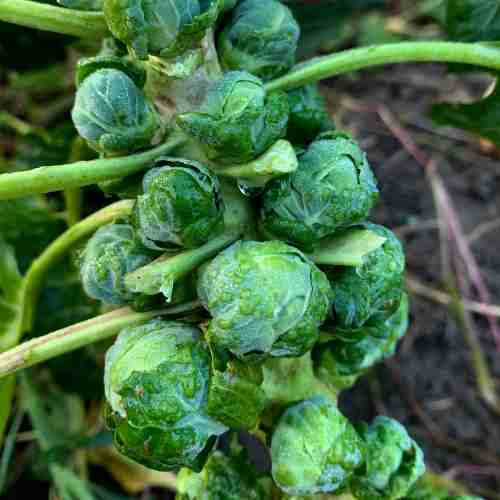
Choosing the Right Brussels Sprouts Variety
Brussels sprouts come in several varieties, so choose one that suits your climate and growing preferences.
1. Early-Maturing Varieties (For short growing seasons)
- ‘Jade Cross’ – Compact, disease-resistant, and produces firm sprouts.
- ‘Franklin’ – Matures in 85–90 days, great for northern gardeners.
2. Standard Varieties (For traditional fall harvests)
- ‘Long Island Improved’ – Classic, heirloom variety with high yields.
- ‘Diablo’ – Uniform sprouts with excellent flavor, takes 100–110 days to mature.
3. Late-Maturing Varieties (For extended fall and winter harvests)
- ‘Dagan’ – Produces large sprouts that hold up well in cool weather.
- ‘Gustus’ – Known for its mild, sweet flavor after frost exposure.

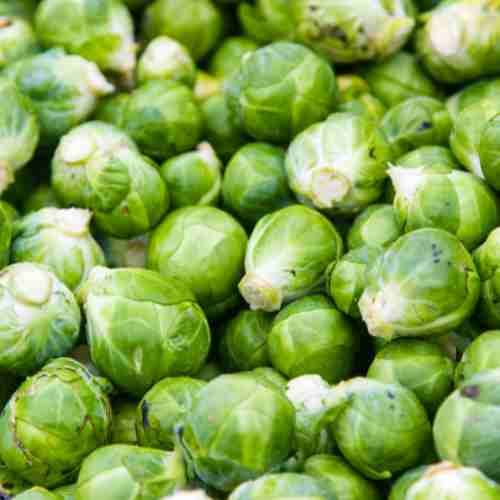
When to Plant Brussels Sprouts
Brussels sprouts have a long growing season (90–120 days) and prefer cool temperatures. Plan your planting based on your region’s frost dates.
Spring Planting (For Mild Climates)
- Start seeds indoors 6–8 weeks before the last frost.
- Transplant outdoors after the danger of frost has passed.
Fall Planting (Best for Flavor)
- Sow seeds in mid-to-late summer for a fall harvest.
- This timing allows sprouts to mature in cooler weather, which improves their flavor.

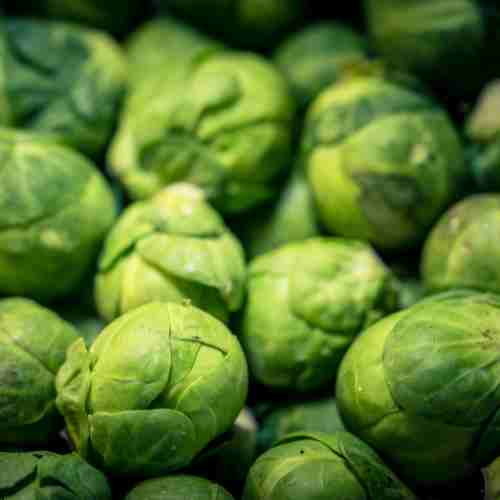
How to Plant Brussels Sprouts
1. Choose the Right Location
Brussels sprouts need full sun (at least 6 hours daily) and well-drained, fertile soil. They do best in raised beds or open garden spaces where they won’t be shaded.
2. Prepare the Soil
- Brussels sprouts prefer a soil pH of 6.0–7.5.
- Mix in compost or aged manure before planting to provide essential nutrients.
- Ensure good drainage—soggy soil can cause root rot.
3. Planting Seeds or Transplants
- Direct Sowing: Plant seeds ½ inch deep, spacing them 3 inches apart.
- Transplanting: When seedlings are 4–6 inches tall, space them 18–24 inches apart in rows 2–3 feet apart.

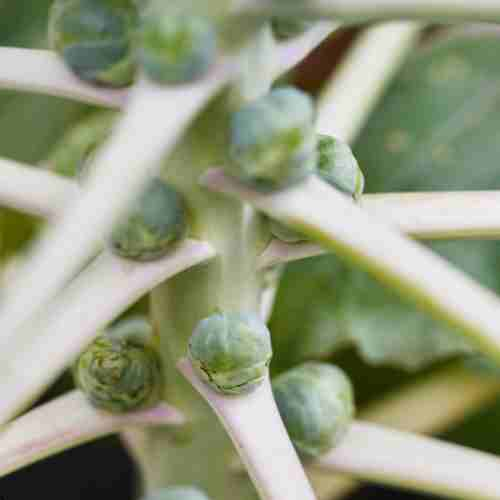
Caring for Brussels Sprouts
Brussels sprouts need consistent care to grow strong and produce healthy sprouts.
1. Watering
- Keep the soil evenly moist but not soggy.
- Water 1–1.5 inches per week, more in hot weather.

2. Fertilizing
- Use a balanced fertilizer (10-10-10) or an organic option like fish emulsion.
- Side-dress plants with compost or aged manure every 3–4 weeks.
3. Staking and Support
- Taller varieties (over 2 feet) may need staking to prevent them from toppling in strong winds.
4. Pest Control
Common pests include:
- Cabbage worms & loopers – Use floating row covers or apply organic Bt spray.
- Aphids – Rinse with water or introduce ladybugs.
- Flea beetles – Sprinkle diatomaceous earth around plants.

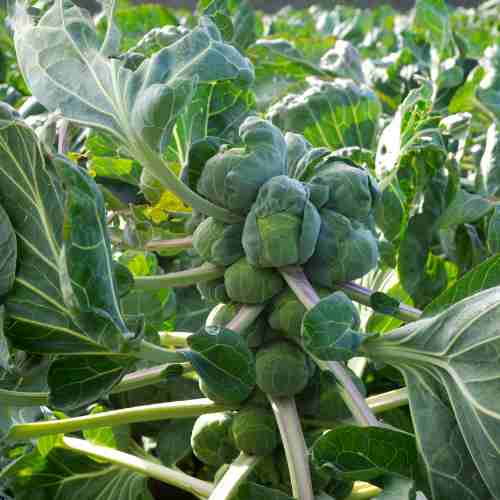
When and How to Harvest Brussels Sprouts
Brussels sprouts are ready to harvest 90–120 days after planting. You’ll know it’s time when the lower sprouts are firm, green, and about 1 inch in diameter.
1. Harvesting Individual Sprouts
- Start at the bottom of the plant, twisting or cutting off mature sprouts.
- Work your way up as the upper sprouts continue growing.
2. Harvesting the Whole Plant
- If winter is approaching, cut the entire stalk at the base.
- Remove leaves and store the stalk in a cool place.

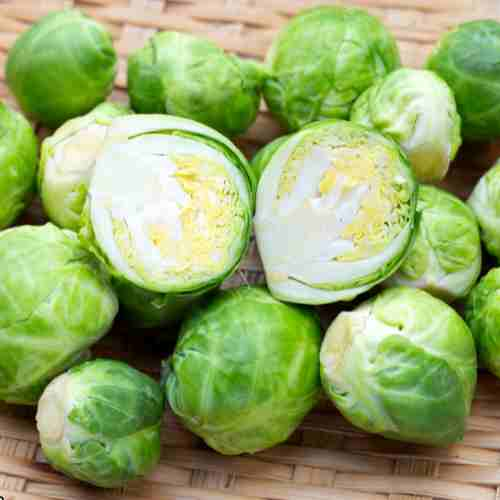
Storing and Using Brussels Sprouts
Once harvested, Brussels sprouts stay fresh for up to 2 weeks if stored correctly.

- Keep sprouts unwashed in a plastic bag in the fridge.
- For long-term storage, blanch and freeze them.

- Roast with olive oil, garlic, and parmesan.
- Sauté with bacon for extra flavor.
- Shred raw into a salad or slaw.
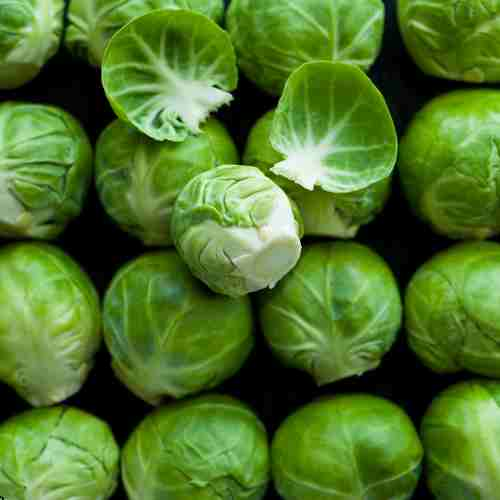
FAQs About Growing Brussels Sprouts
How long do Brussels sprouts take to grow?
Brussels sprouts take 90–120 days to mature, depending on the variety. They require a long growing season, so plan ahead to ensure they develop in cool weather for the best flavor.
Can Brussels sprouts survive frost?
Yes! In fact, Brussels sprouts taste sweeter after a light frost. They can tolerate temperatures down to 20°F (-6°C), making them an excellent fall and winter crop.
When is the best time to plant Brussels sprouts?
For the best results:
- Spring planting: Start seeds indoors 6–8 weeks before the last frost and transplant when temperatures warm up.
- Fall planting (recommended): Sow seeds in mid-to-late summer so sprouts mature in the cool fall weather.
Do Brussels sprouts need full sun or shade?
Brussels sprouts need full sun—at least 6 hours per day. Too much shade will result in leggy plants and smaller sprouts.
How often should I water Brussels sprouts?
Water consistently, about 1–1.5 inches per week. The soil should remain moist but not soggy. Dry soil can cause bitter-tasting sprouts and stunted growth.
How do I prevent Brussels sprouts from getting too bitter?
- Grow them in cool weather—warm temperatures make sprouts taste bitter.
- Water regularly to avoid stress.
- Harvest after a frost for the best flavor.
What pests attack Brussels sprouts, and how do I control them?
Common pests include:
- Cabbage worms & loopers – Use floating row covers or spray with organic Bt (Bacillus thuringiensis).
- Aphids – Rinse off with water or use neem oil.
- Flea beetles – Sprinkle diatomaceous earth around plants.
How do I know when Brussels sprouts are ready to harvest?
Sprouts are ready when they are firm, green, and about 1 inch in diameter. Start harvesting from the bottom of the stalk, as sprouts mature from the bottom up.
Can I grow Brussels sprouts in containers?
Yes, but you’ll need a large container (at least 12 inches deep and wide). Choose a compact variety, and provide a sturdy stake for support.
How do I store Brussels sprouts after harvesting?
- Store unwashed sprouts in a plastic bag in the fridge for up to 2 weeks.
- Blanch and freeze for long-term storage.
- Keep whole stalks in a cool, humid place for extended freshness.
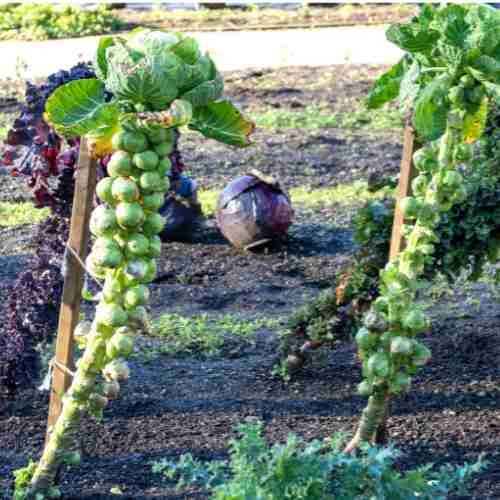
Final Tips for a Successful Brussels Sprout Harvest





Growing Brussels sprouts takes patience, but the reward is worth it! Whether roasted, sautéed, or shaved into a salad, homegrown Brussels sprouts are a delicious, nutritious addition to your table.
Get our Gardening Buddy and find veggies that fit your conditions best.
You Can Grow It!
Partners and Sponsors
We are forever grateful to our partners and sponsors. Send an email to team @ strongecho.com and let’s see how we can grow each other’s impact!






